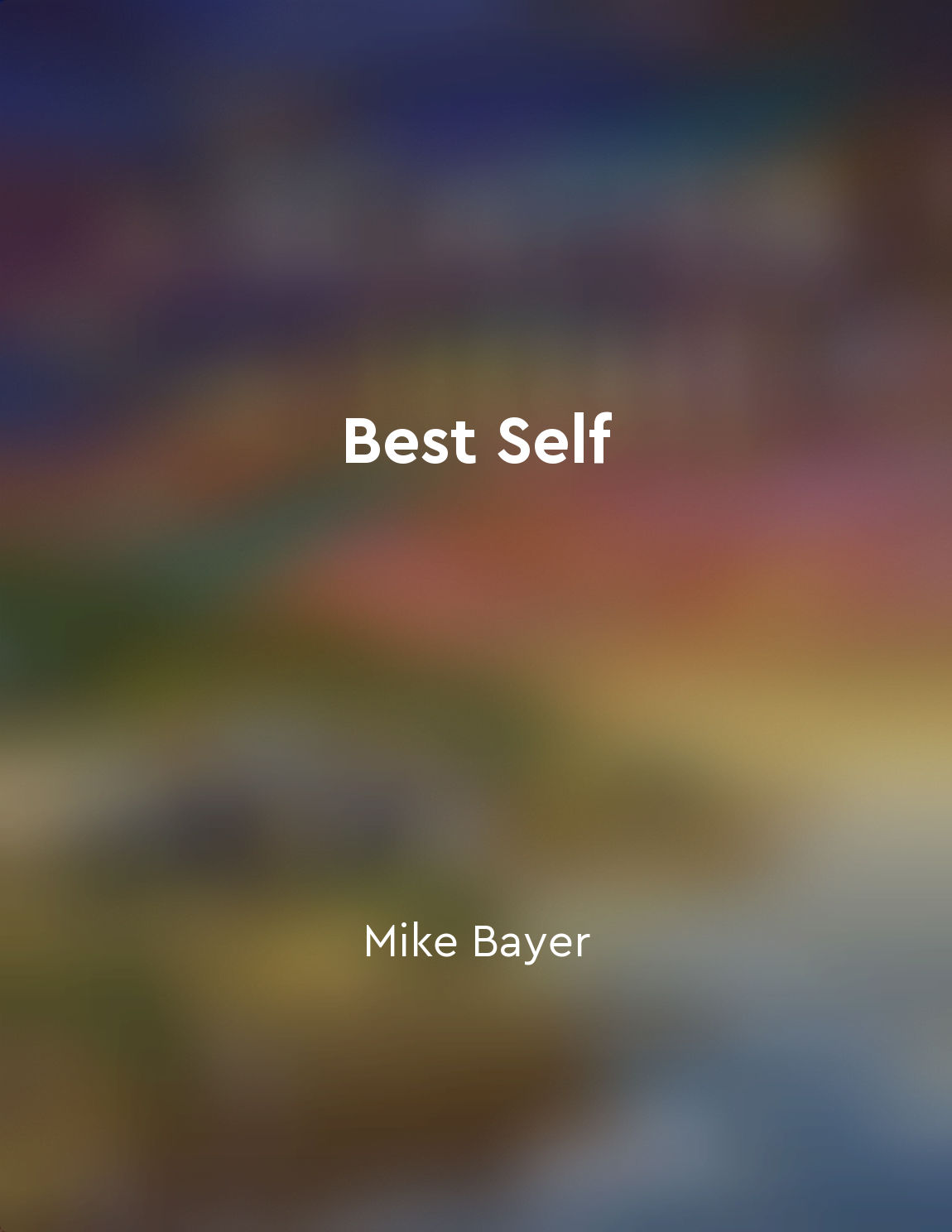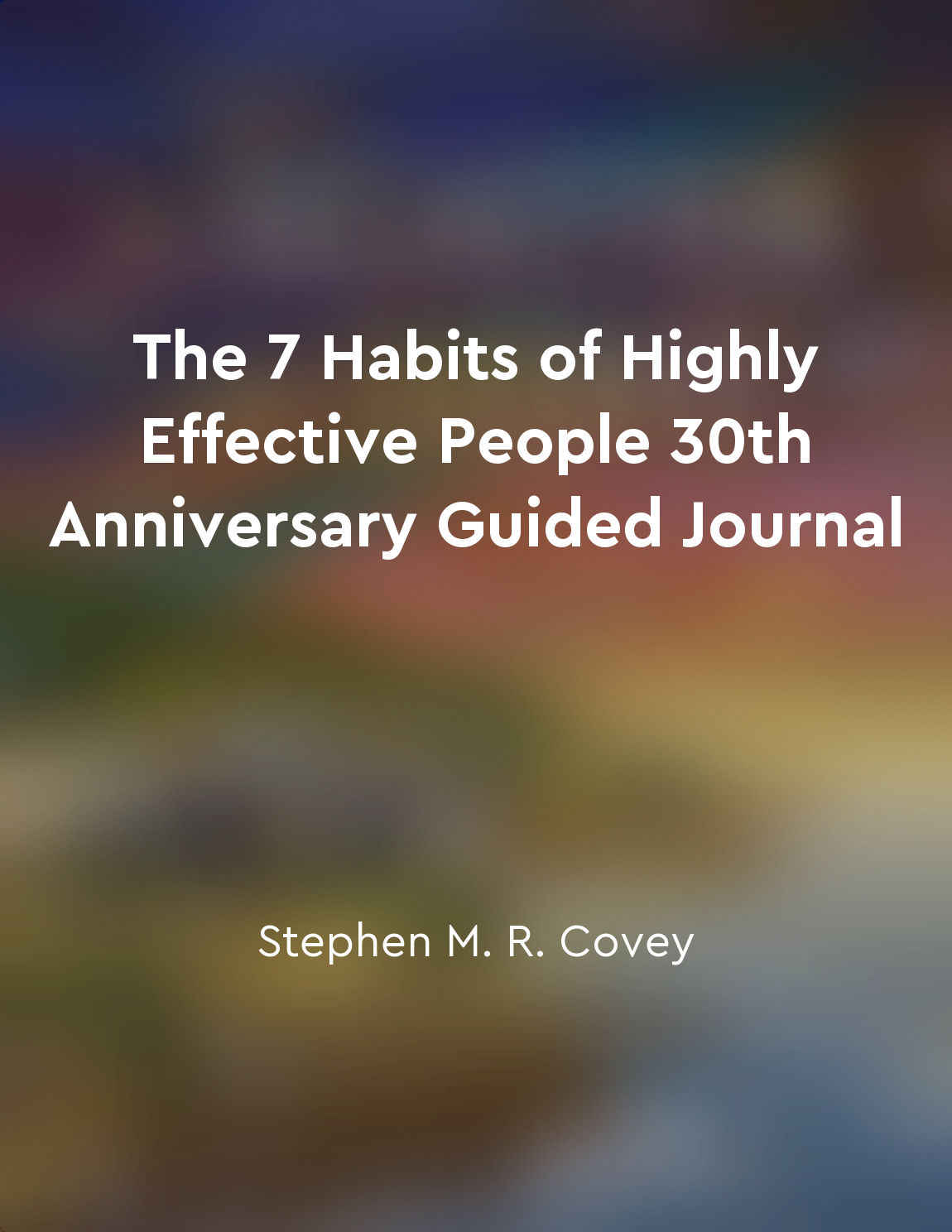Visual cues can trigger desired behaviors from "summary" of Summary of Atomic Habits by Summareads Media
Our brains are wired to respond to visual cues. This means that we are more likely to act in a certain way if we see something that reminds us of that behavior. For example, if you leave your running shoes by the front door, you are more likely to go for a run because you see the shoes and they act as a visual reminder. This is why it's important to surround yourself with visual cues that trigger the behaviors you want to adopt. By intentionally placing visual cues in your environment, you can make it easier to stick to your desired habits. For example, if you want to drink more water, you can place a water bottle on your desk so that you are reminded to drink throughout the day. Similarly, if you want to read more, you can leave a book on your nightstand so that you are reminded to read before bed. Visual cues can also help you break bad habits. For example, if you want to stop eating junk food, you can remove all unhealthy snacks from your pantry and replace them with fruits and vegetables. This way, when you open the pantry, you are more likely to choose a healthier option because that is what you see. In order for visual cues to be effective, they need to be obvious and in plain sight. If you have to search for a visual cue, it is less likely to trigger the desired behavior. Make sure that the visual cues in your environment are easy to see and access so that they can effectively remind you of the habits you want to adopt.- Visual cues are a powerful tool for shaping your behavior. By strategically placing visual reminders in your environment, you can make it easier to stick to your desired habits and break free from bad ones. So take a look around your space and see how you can use visual cues to your advantage.
Similar Posts
Developing resilience is important in sustaining new habits
To sustain new habits, it is crucial to develop resilience. Resilience is the ability to bounce back from setbacks and keep mov...
Habit change can lead to feelings of empowerment and control
Changing habits can have a significant impact on how we feel about ourselves and the world around us. When we successfully make...

Building new habits requires commitment and dedication
In order to build new habits, one must possess a deep sense of commitment and dedication. Changing ingrained behaviors is not a...
Building habits is a lifelong journey that requires ongoing effort
Building habits is a lifelong journey that demands ongoing effort. It's not just a matter of flipping a switch; it requires per...
The Golden Rule of Habit Change: Keep the cue and reward, change the routine
The Golden Rule of Habit Change, as outlined by the author, involves keeping the cue and reward the same while changing the rou...

Embrace change and growth
The idea of welcoming change and fostering personal growth is a central theme throughout these pages. It is a concept that chal...

Practicing gratitude and forgiveness
Gratitude and forgiveness are essential practices on the path to personal growth and healing. When we cultivate gratitude, we s...
Connecting with others who share similar goals can provide support
When we surround ourselves with people who share similar goals, we create a supportive environment that propels us towards succ...

Invest in personal growth
Investing in personal growth is a key concept in The 7 Habits of Highly Effective People 30th Anniversary Guided Journal. This ...
Rewards can be adjusted to reinforce desired behaviors
In order to effectively shape and reinforce desired behaviors, it is crucial to understand the role that rewards play in this p...


